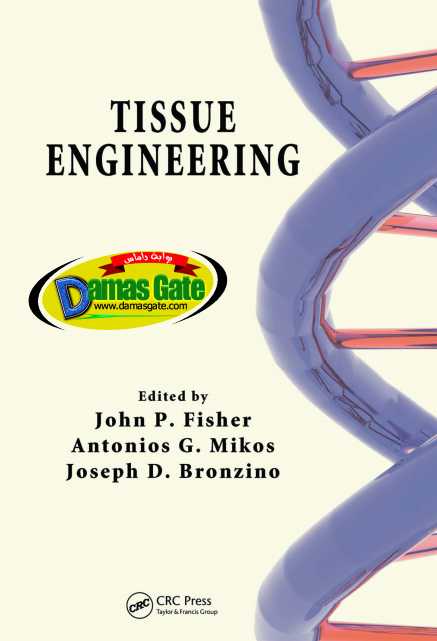Tissue Engineering - John P. Fisher

Preface
Tissue engineering is increasingly viewed as the future of medicine. As evidenced in both the scientific
and popular press, there exists considerable excitement surrounding the strategy of regenerative medicine.
In an effort to put the numerous advances in the field into a broad context, this book is devoted to the
dissemination of current thoughts on the development of engineered tissues. Three main topics are considered
and formthe basis for the three sections of the text: Fundamentals of Tissue Engineering, Enabling
Technologies, and Tissue Engineering Applications. Fundamentals of Tissue Engineering examines the
properties of stem cells, primary cells, growth factors, and extracellular matrix as well as their impact
on the development of tissue-engineered devices. Enabling Technologies focuses upon those strategies
typically incorporated into tissue-engineered devices or utilized in their development, including scaffolds,
nanocomposites, bioreactors, drug delivery systems, and gene therapy techniques. Tissue Engineering
Applications presents synthetic tissues and organs that are currently under development for regenerative
medicine applications. The contributing authors are a diverse group with backgrounds in academia, clinical
medicine, and industry. Furthermore, the text includes contributions from Europe, Asia, and North
America, helping to broaden the views on the development and application of tissue-engineered devices.
The text is largely derived fromthe Advances in Tissue Engineering Short Course, a pioneering forumon
regenerative medicine held at Rice University since 1993. The ATE Short Course has educated researchers,
students, clinicians, and engineers on both the fundamentals of tissue engineering and recent advances
in many of the most prominent tissue engineering laboratories around the world. For many of the
contributors, the chapter included in this text presents findings that have been recently discussed at the
Advances in Tissue Engineering Short Course.
The target audience for this text includes not only researchers, but also advanced students and industrial
investigators. The text should be a useful reference for courses devoted to tissue engineering fundamentals
and those laboratories developing tissue-engineered devices for regenerative medicine therapy.
John P. Fisher
University of Maryland
Antonios G. Mikos
Rice University
Download
http://s18.alxa.net/s18/srvs2/02/003...n.P.Fisher.rar

Preface
Tissue engineering is increasingly viewed as the future of medicine. As evidenced in both the scientific
and popular press, there exists considerable excitement surrounding the strategy of regenerative medicine.
In an effort to put the numerous advances in the field into a broad context, this book is devoted to the
dissemination of current thoughts on the development of engineered tissues. Three main topics are considered
and formthe basis for the three sections of the text: Fundamentals of Tissue Engineering, Enabling
Technologies, and Tissue Engineering Applications. Fundamentals of Tissue Engineering examines the
properties of stem cells, primary cells, growth factors, and extracellular matrix as well as their impact
on the development of tissue-engineered devices. Enabling Technologies focuses upon those strategies
typically incorporated into tissue-engineered devices or utilized in their development, including scaffolds,
nanocomposites, bioreactors, drug delivery systems, and gene therapy techniques. Tissue Engineering
Applications presents synthetic tissues and organs that are currently under development for regenerative
medicine applications. The contributing authors are a diverse group with backgrounds in academia, clinical
medicine, and industry. Furthermore, the text includes contributions from Europe, Asia, and North
America, helping to broaden the views on the development and application of tissue-engineered devices.
The text is largely derived fromthe Advances in Tissue Engineering Short Course, a pioneering forumon
regenerative medicine held at Rice University since 1993. The ATE Short Course has educated researchers,
students, clinicians, and engineers on both the fundamentals of tissue engineering and recent advances
in many of the most prominent tissue engineering laboratories around the world. For many of the
contributors, the chapter included in this text presents findings that have been recently discussed at the
Advances in Tissue Engineering Short Course.
The target audience for this text includes not only researchers, but also advanced students and industrial
investigators. The text should be a useful reference for courses devoted to tissue engineering fundamentals
and those laboratories developing tissue-engineered devices for regenerative medicine therapy.
John P. Fisher
University of Maryland
Antonios G. Mikos
Rice University
Download
http://s18.alxa.net/s18/srvs2/02/003...n.P.Fisher.rar